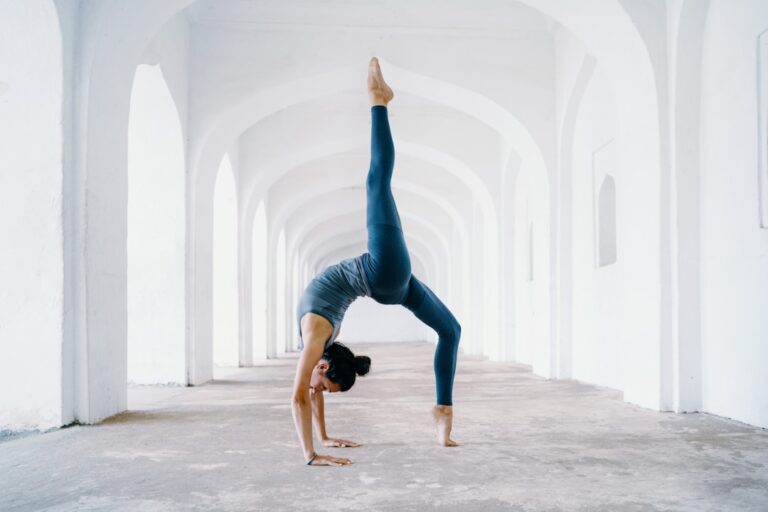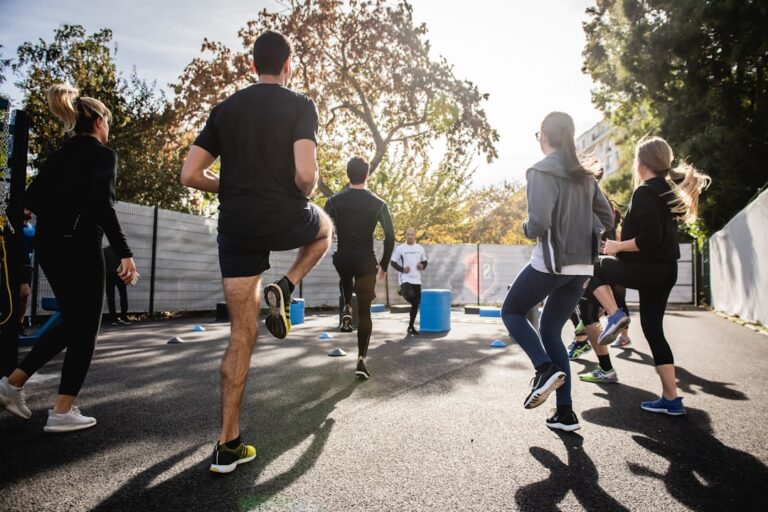Compression socks are specialized hosiery designed to improve blood circulation in the legs. They are made from elastic materials that apply gentle pressure to the ankles and legs, gradually decreasing as they move up the calf. This graduated compression helps to promote better blood flow from the legs back to the heart, reducing the risk of blood clots and swelling.
Compression socks come in various lengths, including knee-high, thigh-high, and full-length options, and are available in different levels of compression to suit individual needs. Compression socks are commonly used by athletes, pregnant women, individuals with certain medical conditions, and frequent travelers. They are also known as compression stockings or support socks and are available in a wide range of styles and colors to suit different preferences.
While they were initially designed for medical purposes, such as managing venous disorders and preventing deep vein thrombosis (DVT), they have gained popularity among travelers for their ability to alleviate discomfort and reduce the risk of circulation-related issues during long periods of sitting or standing. Compression socks are not just for those with medical conditions; they can benefit anyone looking to improve their leg health and overall comfort, especially during travel. Whether you’re flying long distances, taking a road trip, or spending extended periods on your feet, compression socks can provide much-needed support and relief for your legs.
Key Takeaways
- Compression socks are specially designed socks that apply pressure to your legs, ankles, and feet to improve blood flow and reduce swelling.
- Using compression socks while traveling can help prevent blood clots, reduce swelling, and alleviate discomfort during long periods of sitting or standing.
- When choosing compression socks for travel, consider the level of compression, material, size, and fit to ensure maximum comfort and effectiveness.
- To maximize the benefits of compression socks while traveling, it’s important to stay hydrated, move around regularly, and elevate your legs when possible.
- Compression socks improve circulation by helping the veins and muscles move blood more efficiently, reducing the risk of blood clots and swelling during travel.
Benefits of Using Compression Socks While Traveling
Improved Blood Circulation and Reduced Risk of Blood Clots
One of the main advantages of compression socks is their ability to improve blood circulation in the legs, which can help prevent swelling, discomfort, and the development of blood clots. When sitting for long periods during flights or car rides, blood flow to the legs can become restricted, leading to swelling and discomfort. Compression socks work by applying gentle pressure to the legs, promoting better circulation and reducing the risk of these issues.
Reduced Leg Fatigue and Muscle Soreness
In addition to improving circulation, compression socks can also help reduce leg fatigue and muscle soreness that often accompany long periods of travel. The graduated compression provided by these socks helps support the muscles and reduce vibration, which can lead to less fatigue and quicker recovery after long journeys.
Regulated Body Temperature and Minimized Risk of DVT
Furthermore, wearing compression socks can also help regulate body temperature and moisture levels in the legs, keeping them comfortable and less prone to overheating or excessive sweating during travel. Another benefit of using compression socks while traveling is their ability to minimize the risk of developing deep vein thrombosis (DVT), a serious condition that occurs when blood clots form in the deep veins of the legs.
How to Choose the Right Compression Socks for Travel

When choosing compression socks for travel, it’s important to consider several factors to ensure you select the right pair for your needs. The first consideration is the level of compression, which is typically measured in millimeters of mercury (mmHg). Compression levels can range from mild (8-15 mmHg) to moderate (15-20 mmHg) to firm (20-30 mmHg) and extra firm (30-40 mmHg).
For most travelers, mild to moderate compression is sufficient to provide the necessary support and comfort during long periods of sitting or standing. It’s also important to consider the length of the compression socks. Knee-high socks are a popular choice for travel as they provide coverage for the lower legs and calves without being too restrictive.
However, some individuals may prefer thigh-high or full-length options for additional coverage and support. The material of the socks is another important factor to consider. Look for breathable, moisture-wicking fabrics that will keep your legs comfortable and dry during travel.
When choosing compression socks for travel, it’s also essential to consider your individual needs and any specific health concerns you may have. If you have existing circulation issues or medical conditions, it’s best to consult with a healthcare professional to determine the most suitable compression level and style for your needs. Additionally, consider factors such as sizing, durability, and ease of care when selecting compression socks for travel to ensure they provide the best possible support and comfort for your journeys.
Tips for Wearing Compression Socks While Traveling
| Benefits | Tips |
|---|---|
| Improves circulation | Wear them during the entire flight or long journey |
| Reduces swelling and discomfort | Choose the right size and compression level |
| Prevents blood clots | Stay hydrated and avoid crossing your legs |
| Minimizes leg fatigue | Take short walks and do ankle exercises |
While wearing compression socks can provide numerous benefits during travel, it’s essential to wear them correctly to maximize their effectiveness and comfort. Here are some tips for wearing compression socks while traveling: 1. Put them on before you start your journey: It’s best to put on your compression socks before you embark on your journey to ensure you start off with optimal support and comfort for your legs.
2. Ensure a proper fit: Make sure your compression socks fit snugly but not too tight. They should be comfortable and not cause any restriction or discomfort.
3. Stay hydrated: Drinking plenty of water during your travels can help prevent dehydration and promote better circulation in conjunction with wearing compression socks. 4.
Take regular breaks: If possible, take short walks or do leg exercises during long flights or car rides to further promote circulation in your legs. 5. Remove them carefully: When taking off your compression socks after your journey, do so gently to avoid causing any irritation or discomfort to your skin.
By following these tips, you can make the most of wearing compression socks during your travels and experience improved comfort and well-being throughout your journey.
How Compression Socks Improve Circulation and Reduce Swelling
Compression socks work by applying gentle pressure to the legs, which helps improve blood circulation and reduce swelling. The graduated compression provided by these socks is tighter at the ankle and gradually decreases as it moves up the calf, promoting better blood flow from the legs back to the heart. This helps prevent blood from pooling in the lower extremities, reducing the risk of swelling and discomfort during long periods of sitting or standing.
The pressure applied by compression socks also helps support the veins in the legs, aiding in their ability to transport blood back to the heart. This can be especially beneficial during travel when circulation may become compromised due to prolonged periods of immobility. By promoting better circulation, compression socks can help prevent the development of blood clots and reduce the risk of conditions such as deep vein thrombosis (DVT), which can be a concern during long flights or car rides.
In addition to improving circulation, compression socks can also help reduce swelling by preventing fluid buildup in the legs. The gentle pressure applied by these socks helps promote lymphatic drainage, which can aid in reducing swelling and discomfort associated with prolonged sitting or standing. By wearing compression socks during travel, individuals can experience improved leg comfort, reduced swelling, and enhanced overall well-being throughout their journey.
The Science Behind Compression Socks

The science behind compression socks lies in their ability to apply graduated pressure to the legs, which helps improve blood circulation and reduce the risk of circulation-related issues. The pressure exerted by compression socks works to support the veins in the legs, aiding in their ability to transport blood back to the heart more efficiently. This can help prevent blood from pooling in the lower extremities, reducing the risk of swelling and discomfort during long periods of immobility.
Furthermore, compression socks can also aid in promoting lymphatic drainage, which helps reduce swelling and fluid buildup in the legs. The gentle pressure applied by these socks helps stimulate the movement of lymph fluid, which plays a crucial role in maintaining fluid balance in the body. By promoting lymphatic drainage, compression socks can help alleviate swelling and discomfort associated with prolonged sitting or standing during travel.
The science behind compression socks also involves their ability to reduce muscle vibration and fatigue during physical activity or prolonged periods of travel. The graduated compression provided by these socks helps support the muscles in the legs, reducing vibration and muscle fatigue that can occur during long journeys. This can lead to less muscle soreness and quicker recovery after travel, enhancing overall comfort and well-being.
Other Ways to Maximize Comfort While Traveling
In addition to wearing compression socks, there are several other ways to maximize comfort while traveling: 1. Stay active: Take regular breaks to stretch your legs and move around during long flights or car rides to promote better circulation. 2. Wear comfortable clothing: Choose loose-fitting, breathable clothing that allows for easy movement and comfort during travel. 3. Stay hydrated: Drink plenty of water throughout your journey to prevent dehydration and promote better circulation. 4. Use supportive footwear: Wear comfortable shoes with good arch support to reduce strain on your feet and legs during travel. 5. Elevate your legs: If possible, elevate your legs while sitting to reduce swelling and promote better circulation. By incorporating these additional strategies into your travel routine along with wearing compression socks, you can enhance overall comfort and well-being during your journeys. Whether you’re traveling for business or pleasure, taking steps to prioritize leg health and comfort can make a significant difference in how you feel throughout your travels.
If you’re looking for more information on the benefits of travel compression socks, check out this article on Toadfrogcrafts. They discuss how compression socks can help improve circulation and reduce swelling during long flights or car rides, making them a must-have for any traveler.
FAQs
What are travel compression socks?
Travel compression socks are specially designed socks that apply gentle pressure to the legs, ankles, and feet to promote better blood circulation during long periods of sitting or standing, such as during travel.
How do travel compression socks work?
Travel compression socks work by applying graduated pressure to the legs, with the greatest pressure at the ankle and decreasing pressure as it moves up the leg. This helps to improve blood flow and reduce swelling and discomfort.
What are the benefits of wearing travel compression socks?
The benefits of wearing travel compression socks include reducing the risk of blood clots, preventing swelling and discomfort in the legs and feet, and improving overall circulation during long periods of travel.
Who should wear travel compression socks?
Travel compression socks are recommended for anyone who spends long periods of time sitting or standing, such as travelers, office workers, and individuals with circulatory issues or a history of blood clots.
Are there different levels of compression in travel compression socks?
Yes, travel compression socks come in different levels of compression, typically measured in millimeters of mercury (mmHg). The level of compression needed may vary depending on individual needs and preferences.
Can I wear travel compression socks on a plane?
Yes, travel compression socks are commonly worn during air travel to help prevent swelling and discomfort in the legs and feet, as well as reduce the risk of blood clots during long flights.





















+ There are no comments
Add yours